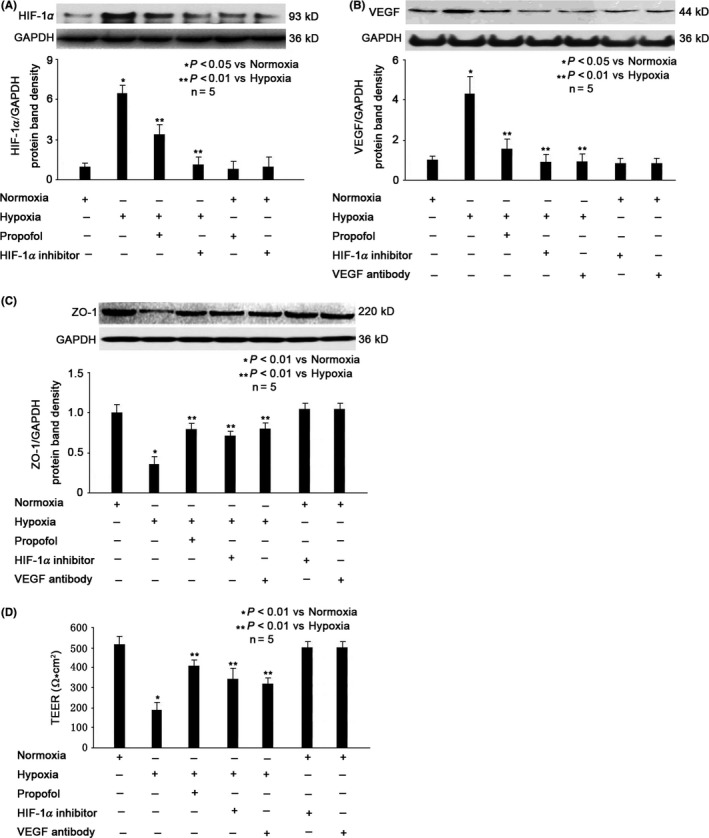Figure 3.

Role of HIF1α/VEGF in propofol‐ and hypoxia‐modulated ZO‐1 expression. A, Hypoxia increased HIF1α level, which was attenuated by 100 μmol/L propofol. The upper panel was a representative experiment and the lower panel was the summary of densitometric data from five separate experiments. GAPDH served as loading control. Data were expressed as normalized ratio of protein band density of HIF1α against GAPDH and were presented as mean ±standard deviation. B, Hypoxia‐reduced VEGF level, which was increased by 100 μmol/L propofol. The upper panel was a representative experiment, and the lower panel was the summary of densitometric data from five separate experiments. GAPDH served as loading control. Data were expressed as normalized ratio of protein band density of VEGF against GAPDH and were presented as mean ±standard deviation. C, Hypoxia‐reduced ZO‐1 expression was reversed by propofol, HIF1α inhibitor and VEGF inhibitor. The upper panel was a representative experiment, and the lower panel was the summary of densitometric data from five separate experiments. GAPDH served as loading control. Data were expressed as normalized ratio of protein band density of ZO‐1 against GAPDH and were presented as mean ±standard deviation. D, Hypoxia‐reduced BBB integrity was reversed by propofol, HIF1α inhibitor and VEGF inhibitor. TEER values were expressed as Ω*cm2, presented as mean ±standard deviation, and summarized from five separate experiments. Statistical comparisons were made by paired Student's t test, one‐way ANOVA followed by Tukey's post hoc test (Student's Newman‐Keuls test)
